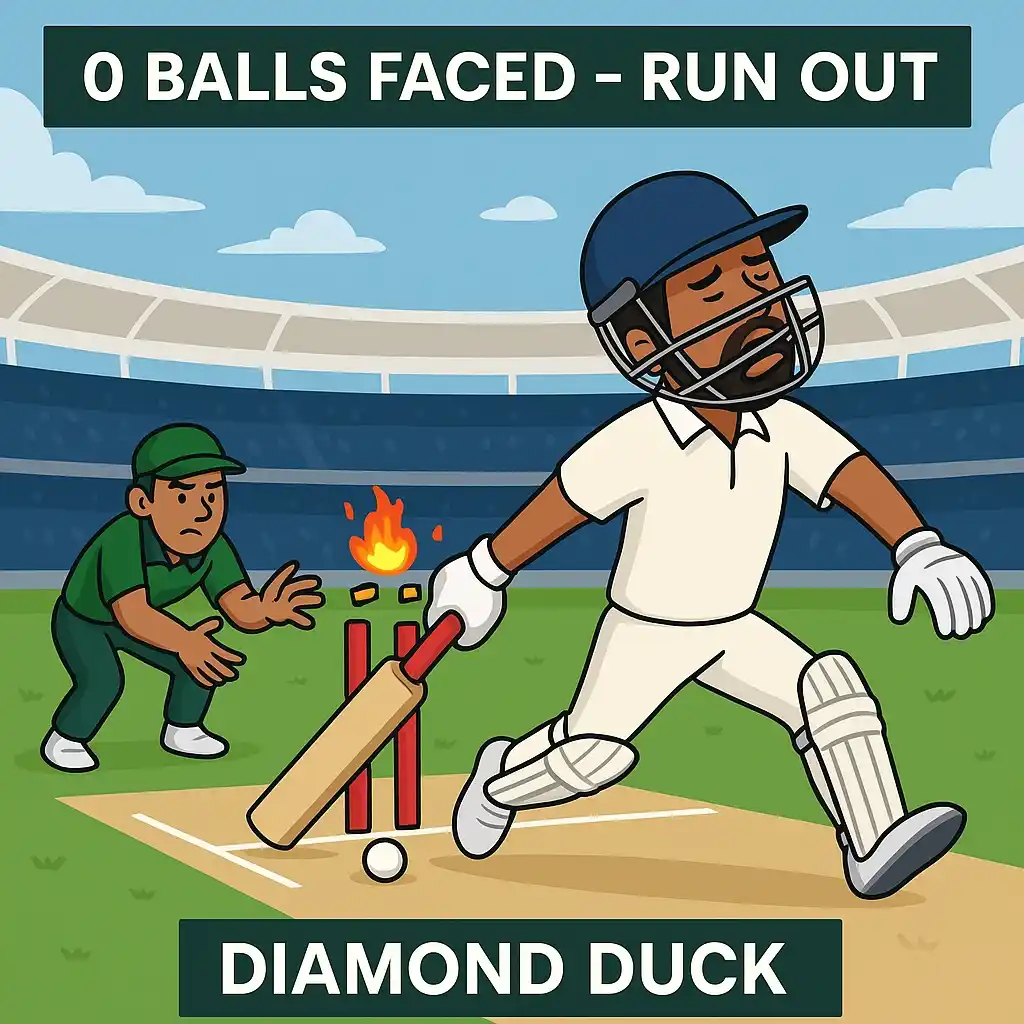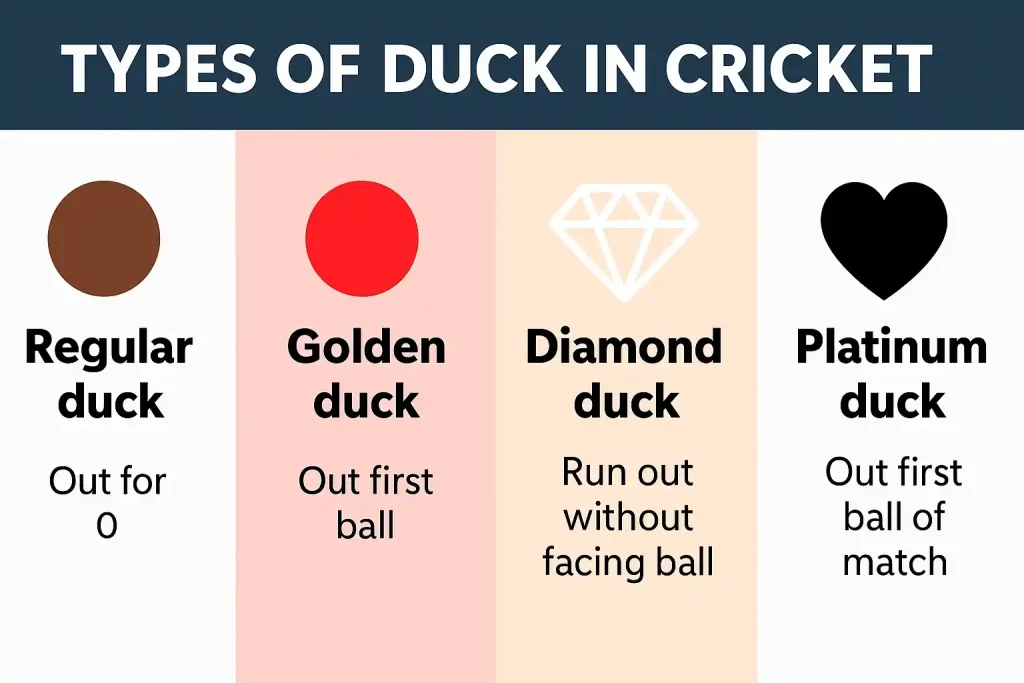
You never forget a diamond duck—and that applies whether you’re a fan, a player, or someone who strolled off the field without facing a delivery. Cricket is unkind in many ways, and getting out for zero without facing a single ball is something entirely unique. While it might get overlooked amidst the noise of centuries and hat-tricks, for those who have played club cricket on gritty fields or under lights in front of a cheering crowd, the concept of a diamond duck resonates deeply.
What Is a Diamond Duck in Cricket?
Let’s break it down for the uninitiated: a “duck” in cricket refers to a batter being dismissed without scoring a run. It’s a term born in the late 1800s, from the shape of a duck’s egg — perfectly oval and, of course, symbolizing zero. But the game evolved. So did the terminology. A diamond duck is when a batter is dismissed without even facing a single ball. Most often, this happens when a non-striker is run out or a batter is out stumped or run out immediately upon taking guard. There’s no reprieve. No chance to settle. Just: walk in, and walk straight back out.
Now think about the psychology behind that. You warm up, get mentally locked in, maybe even visualize your innings on the team bus. And then? You’re gone in seconds. It’s not just a failure. It’s an erasure.
The Different Shades of Ducks: A Quick Guide
Cricket, in its poetic cruelty, has many shades of this same fate. And believe it or not, there’s a term for nearly every kind of zero:
| Type of Duck | Description |
| Regular Duck | Dismissed without scoring a run |
| Golden Duck | Dismissed on the first ball faced |
| Diamond Duck | Dismissed without facing a ball |
| Platinum Duck | Dismissed on the first ball of the innings |
| Silver Duck | Dismissed on the second ball faced |
| Bronze Duck | Dismissed on the third ball faced |
And if that wasn’t enough, commentators — and players — have their own regional embellishments. Some say “royal duck,” others use “titanium duck” for first-ball dismissals of the match. The point is, cricket keeps score of your failures with as much variety as it celebrates your success.
Diamond Ducks at the Top Level
You’d expect this kind of dismissal to be rare in elite cricket. It is — but not unheard of. In fact, some of the game’s greats have fallen victim. Adam Gilchrist, one of the most explosive openers of all time, once got run out at the non-striker’s end before facing a ball in an ODI. There was nothing he could do — just confusion, a direct hit, and his name in the book: 0 (0).
Then there’s the unforgettable incident with Inzamam-ul-Haq in a Test match. While attempting a cheeky single, he was caught mid-pitch. No runs. No balls faced. Diamond duck. It sparked laughter and heartbreak in equal measure. That’s the cruel drama of this sport.
Table: Notable Diamond Ducks in International Cricket
| Player | Match Format | Opponent | Mode of Dismissal | Year |
| Adam Gilchrist | ODI | South Africa | Run Out (Non-striker) | 2002 |
| Inzamam-ul-Haq | Test | India | Run Out | 1999 |
| Shikhar Dhawan | T20I | Sri Lanka | Run Out (Stranded) | 2018 |
| James Anderson | Test | Australia | Run Out (Backing Up Too Far) | 2019 |
| Sunil Narine | IPL | CSK | Run Out (Striker’s end) | 2020 |
The Anatomy of a Diamond Duck
To understand how it happens, you’ve got to look beyond the scoreboard. A diamond duck is a failure of coordination — between partners, between thought and action, and sometimes, between instinct and patience. Imagine the scenario: a new batter walks in with two overs to go. The set batter at the other end is desperate to retain strike. They tap and run. The fielding side pounces. One direct hit, and it’s over. No defense. No second chances.
Some diamond ducks are the result of bad luck. Others are self-inflicted — the product of miscommunication or panicked judgment. But all of them are memorable, and all of them feel worse than they look in the match summary.

What Makes Diamond Ducks So Emotionally Loaded?
Part of it is the helplessness. You didn’t even get a chance. No swing. No edge. No LBW call to review. Just: out. And that breeds a different kind of frustration. Teammates give you the awkward pat on the back. The commentator stumbles through the explanation. And if it’s a home crowd — it stings more. Because they never even saw you play.
For junior cricketers and domestic pros trying to break into the top leagues, it can be brutal. Scouts don’t care if you didn’t face a ball. The scorecard shows a duck — that’s all.
Commentary and Cultural Takes
In local leagues around the world, the diamond duck carries its own folklore. In Australian grade cricket, it’s a running joke — a badge of honor, even. In India, it’s more of a superstition. You’ll hear teammates murmur, “Not a good sign for the season,” if someone starts their tournament with a diamond. And in the UK? It earns you a jug fine. That’s right: you buy drinks for the team.
Diamond Ducks in Women’s Cricket
It’s not just the men’s game. Women’s international cricket has had its share of brutal diamond duck moments. Smriti Mandhana, known for her elegance, once got caught short at the striker’s end before facing a ball. And in high-stakes games — like the World Cup knockouts — this sort of dismissal can tilt a team’s psyche.
The takeaway? It’s not about gender. It’s about circumstance. Pressure. Split-second decisions. And sometimes, just dumb luck.
Can You Prepare for a Diamond Duck?
Honestly? Not really. You can drill communication. Practice backing up properly. Know when to run and when to say no. But you can’t prepare for a direct hit from square leg. Or a teammate misjudging a gap. Or a bowler slipping in a quick stumping when your foot lifts for half a second.
What you can do is recover. Forget fast. Shake it off before the next game. The best players don’t avoid failure — they just don’t let it define them.
Remembering Why We Cherish Such Moments
Averages and milestones achieved in a sport teeming with statistics can be overwhelming. Still, the things that endure are often quite different and can be catastrophic in nature. They include the errors, the diamond ducks, and the mix-ups that remind us cricket is fundamentally a human sport.
So the next time you find yourself looking at a scorecard and noticing a 0 (0), keep in mind there is likely a tale associated with it; an error, a gamble, an instance where an individual attempted something audacious. And perhaps, in that, there is also something admirable.

Meet Arjun Kushaan, a passionate cricket analyst at The Cricket24x7. From street matches in his childhood to competitive college tournaments, cricket has always been a central part of Arjun’s life. With a strong background in data analysis and a natural affinity for numbers, he brings a fresh, analytical lens to the game. At The Cricket24x7, Arjun blends his deep love for cricket with his data-driven approach to deliver detailed insights and well-rounded coverage for fans of the sport.
